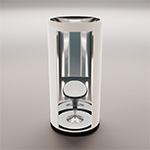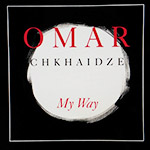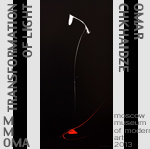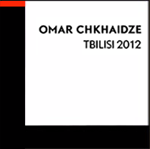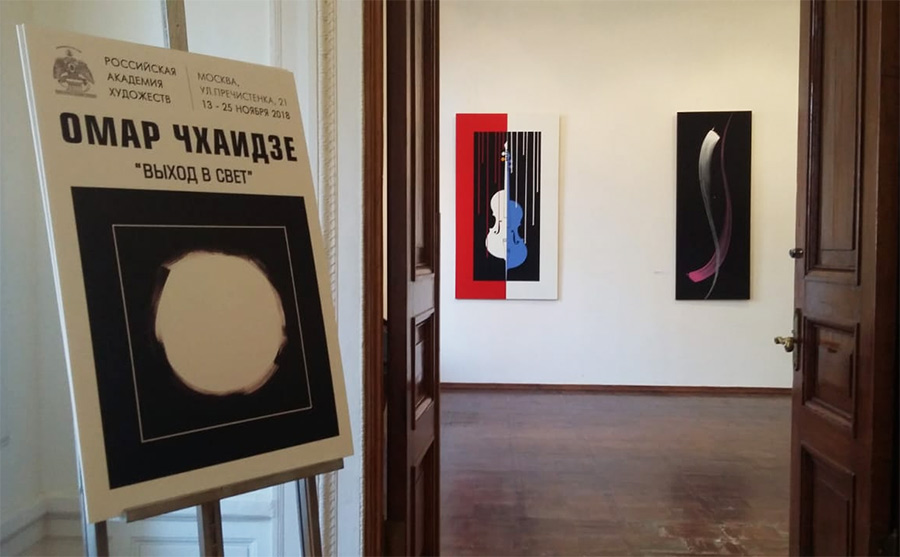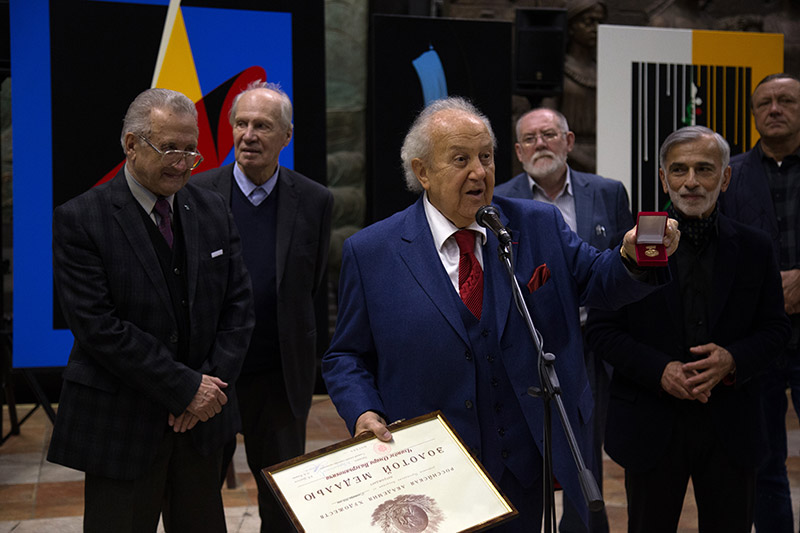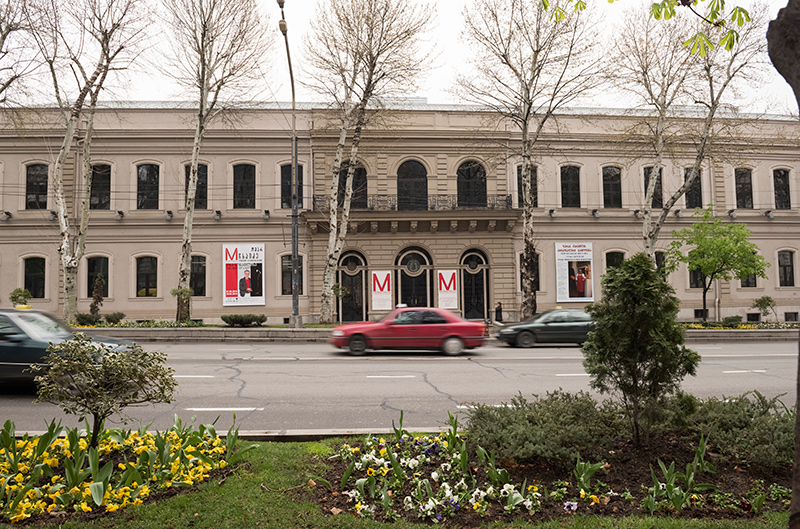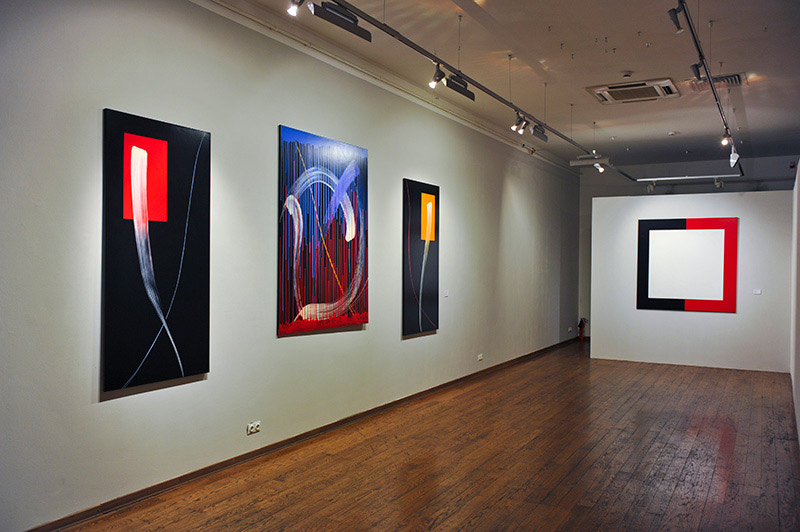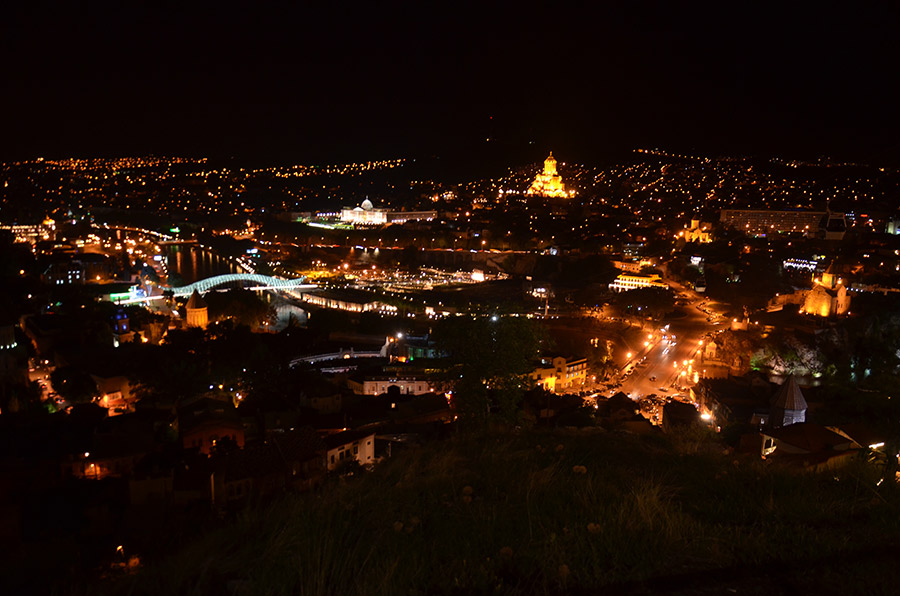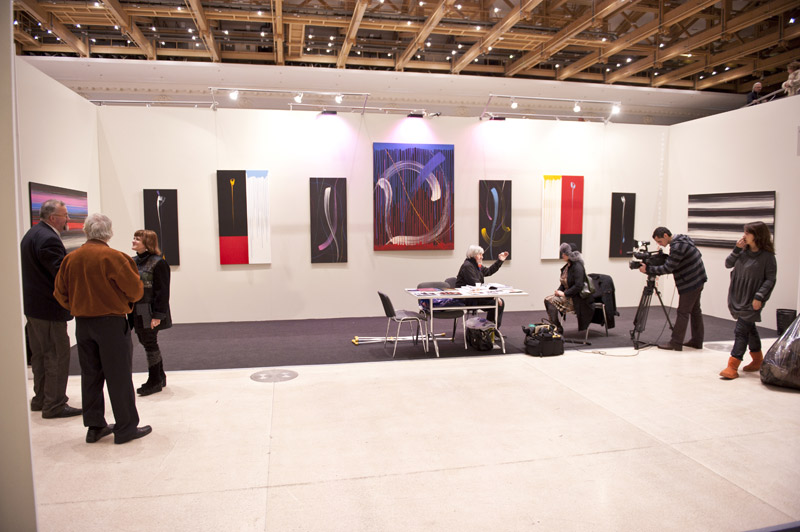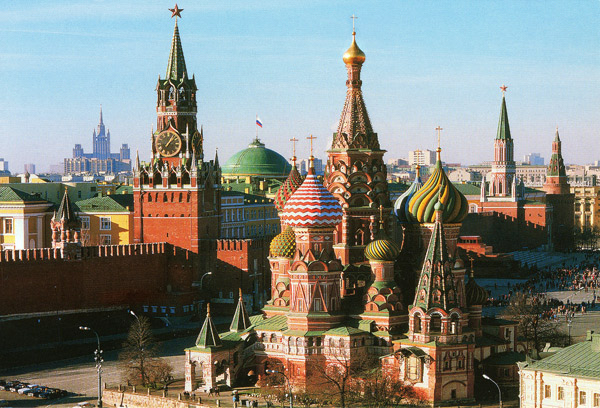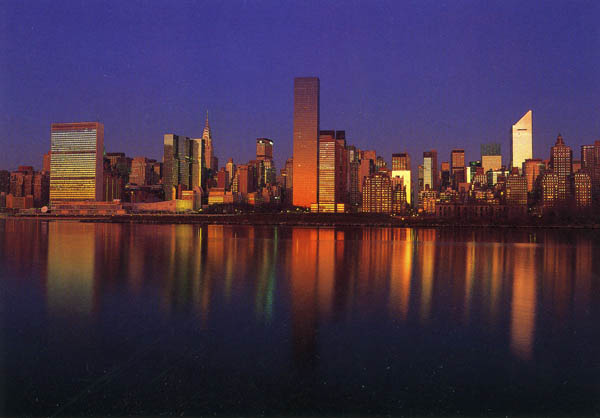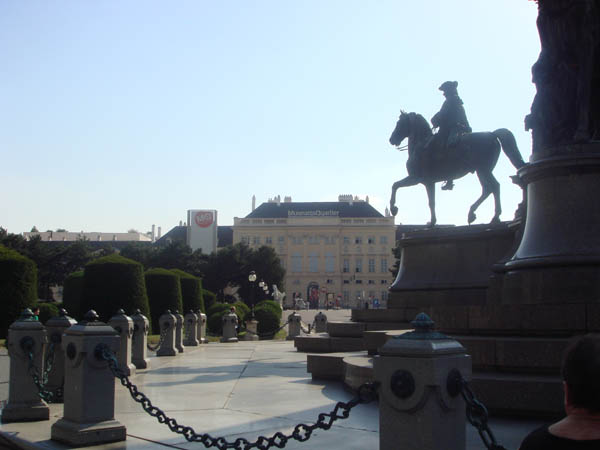Art Blogs
15.12.2013
Light has always aroused fascination in the human eye – especially in the eye of the artist. It’s no coincidence that light was to become a special, ceaselessly resonating theme in painting. As the source of life, it’s been perceived to be the transmitter of celestial realms, endowed with sacred functions. One could deem this incredible, but today – after the shattering experiments in the art of the twentieth-century – we still encounter works crafted in traditional media, wherein light retains its transcendent properties. Such are the paintings of Omar Chkhaidze. Chkhaidze’s primary artistic subject is Light (in his perception, invariably with a capital letter). Belonging to the generation of the sixties, Chkhaidze graduated from the Tbilisi State Academy of Arts, though he had been a nonconformist already in his student years. Early on in his work, he arrived at a non-figurative pictorial idiom, without, however, becoming its fanatical adherent. It may be said that during the Soviet times he’s been engaged in producing heroic abstractions – heroic for the reason that non-figurative painting was forbidden and denounced by the official doctrine, but more importantly because his works betray the longing for the lighter side of being, in a literal and a metaphorical sense, which is not particularly typical for contemporary artists. For Chkhaidze, the luminous equals the Absolute, the heavenly energy connecting the physical and the metaphysical worlds. His striving to convey this equation purely with pictorial means bespeaks an essentially romantic attempt to renew the medium of the easel painting, discredited over and over in the course of the last century.
The project “Transformation of Light”, presented at the Moscow Museum of Modern Art, comprises the artist’s paintings of recent years. This time we face pure abstractions, devoted to Light proper, and even their titles don’t send the viewer away in search of intricate associations, as was the case in Chkhaidze’s earlier works. The title of the current exhibition triggers a certain game of meanings: it is both a transformation of light, as manifested through color (in other words, a mystery of light and color) and a transformation of a theme of light itself in the master’s creative life, a change of his understanding of it, a shift in its rendering.
The first thing required of us, however, is by no means analysis, but contemplation. We become the witnesses of an enchanting spectacle, as though we’re given a chance to glance beyond the familiar frontier of being. In the artist’s treatment, light frees itself from any particularly distinct forms, splitting, as it were, to its very nerve, and by this virtue it surpasses the properties of a day-to-day exciter, assuming the capacity to remind us of eternity.
Chkhaidze’s painted works maintain a strong connection, in a certain regard, to the art of the Middle Ages: his compositions are extraordinary lucid and precisely constructed. So precisely, in fact, that one gets an impression that the image was not produced by human hands. Following the anonymous medieval craftsmen, the artist resigns himself, becoming an instrument of higher powers. It is quite possible, meanwhile, to see in this feature a variant of the post-modernist “death of the author”.Chkhaidze doesn’t impose or state anything: the meaning of his works emerges as if beyond his own will.
Bundles of light, evanescent steeples of rays and even the smallest colored drops are conceived by Chkhaidze to be the carriers of light, dramatically contrasted with gloom and total darkness. He introduces a lot of black into his compositions, in order to establish their primary background. The completely uniform nature of such ground-fields doesn’t prevent us from sensing the breathing void. It is that Nothing, which at some point of our lives each of us comes to think about. The implacably monotonous sounding of it can stifle and suppress, but all the more do we rejoice when we sense the incitement of the bursting luminous agents – always spontaneous in their appearance, but somehow perceived as inevitable. Their vital power shows itself, above all, in color-saturation – the painted stuff of life, in the material sense.
We shouldn’t miss the remarkable technique of the artist’s works. It reminds one of European frescoes, executed, as they are, on wet plaster. It demanded extreme precision in the layering of brush-strokes and don’t allow for modifications. Chkhaidze adheres consistently to these principles. At times, paint fills up certain geometric zones in order to form a perfectly smooth surface, while it seems to have been squeezed right out of a bulky tube in other works. But even the splashes on the artist’s canvases are precious, situated exactly where they need to be, so to enable the fullness of a given work’s “sonance”. Speaking of the texture in Chkhaidze’s works, the most apparent comparison for its ideal smoothness would be enamel. The master is prone to improvisation, but, at the same time, he works with great care, and his pieces, like the paintings of previous ages, look extremely well crafted. This being said, Chkhaidze’s painting is undoubtedly modern. It reveals the traces of our own day, with its highly technological environment. Perfect surfaces, ideal lines, glossy brilliance…One could discern the echo of the avant-garde culture, with its opposing both to the radical renewal of art and its return to the profound experience of the archaic.
Generally, the probing of painting’s formal elements (including pure color, light, texture and facture), the formulation of cosmic concepts, the dreaming about the art of the future, the drive to define it, are all well-known preoccupations of the avant-garde masters. As a participant of the so-called second avant-garde, oriented towards the heritage of the 1910-1920’s, Chkhaidze took over these intentions. And in art, the most diligent students of the past are famously the main pioneers. Through his substantial creative work Omar Chkhaidze boldly asserts: painting is alive. This time, perhaps, it is truly the art of the future.
Any question please e-Mail : gallery@Gallery-OmarChkhaidze.com
Light has always aroused fascination in the human eye – especially in the eye of the artist. It’s no coincidence that light was to become a special, ceaselessly resonating theme in painting. As the source of life, it’s been perceived to be the transmitter of celestial realms, endowed with sacred functions. One could deem this incredible, but today – after the shattering experiments in the art of the twentieth-century – we still encounter works crafted in traditional media, wherein light retains its transcendent properties. Such are the paintings of Omar Chkhaidze. Chkhaidze’s primary artistic subject is Light (in his perception, invariably with a capital letter). Belonging to the generation of the sixties, Chkhaidze graduated from the Tbilisi State Academy of Arts, though he had been a nonconformist already in his student years. Early on in his work, he arrived at a non-figurative pictorial idiom, without, however, becoming its fanatical adherent. It may be said that during the Soviet times he’s been engaged in producing heroic abstractions – heroic for the reason that non-figurative painting was forbidden and denounced by the official doctrine, but more importantly because his works betray the longing for the lighter side of being, in a literal and a metaphorical sense, which is not particularly typical for contemporary artists. For Chkhaidze, the luminous equals the Absolute, the heavenly energy connecting the physical and the metaphysical worlds. His striving to convey this equation purely with pictorial means bespeaks an essentially romantic attempt to renew the medium of the easel painting, discredited over and over in the course of the last century.
The project “Transformation of Light”, presented at the Moscow Museum of Modern Art, comprises the artist’s paintings of recent years. This time we face pure abstractions, devoted to Light proper, and even their titles don’t send the viewer away in search of intricate associations, as was the case in Chkhaidze’s earlier works. The title of the current exhibition triggers a certain game of meanings: it is both a transformation of light, as manifested through color (in other words, a mystery of light and color) and a transformation of a theme of light itself in the master’s creative life, a change of his understanding of it, a shift in its rendering.
The first thing required of us, however, is by no means analysis, but contemplation. We become the witnesses of an enchanting spectacle, as though we’re given a chance to glance beyond the familiar frontier of being. In the artist’s treatment, light frees itself from any particularly distinct forms, splitting, as it were, to its very nerve, and by this virtue it surpasses the properties of a day-to-day exciter, assuming the capacity to remind us of eternity.
Chkhaidze’s painted works maintain a strong connection, in a certain regard, to the art of the Middle Ages: his compositions are extraordinary lucid and precisely constructed. So precisely, in fact, that one gets an impression that the image was not produced by human hands. Following the anonymous medieval craftsmen, the artist resigns himself, becoming an instrument of higher powers. It is quite possible, meanwhile, to see in this feature a variant of the post-modernist “death of the author”.Chkhaidze doesn’t impose or state anything: the meaning of his works emerges as if beyond his own will.
Bundles of light, evanescent steeples of rays and even the smallest colored drops are conceived by Chkhaidze to be the carriers of light, dramatically contrasted with gloom and total darkness. He introduces a lot of black into his compositions, in order to establish their primary background. The completely uniform nature of such ground-fields doesn’t prevent us from sensing the breathing void. It is that Nothing, which at some point of our lives each of us comes to think about. The implacably monotonous sounding of it can stifle and suppress, but all the more do we rejoice when we sense the incitement of the bursting luminous agents – always spontaneous in their appearance, but somehow perceived as inevitable. Their vital power shows itself, above all, in color-saturation – the painted stuff of life, in the material sense.
We shouldn’t miss the remarkable technique of the artist’s works. It reminds one of European frescoes, executed, as they are, on wet plaster. It demanded extreme precision in the layering of brush-strokes and don’t allow for modifications. Chkhaidze adheres consistently to these principles. At times, paint fills up certain geometric zones in order to form a perfectly smooth surface, while it seems to have been squeezed right out of a bulky tube in other works. But even the splashes on the artist’s canvases are precious, situated exactly where they need to be, so to enable the fullness of a given work’s “sonance”. Speaking of the texture in Chkhaidze’s works, the most apparent comparison for its ideal smoothness would be enamel. The master is prone to improvisation, but, at the same time, he works with great care, and his pieces, like the paintings of previous ages, look extremely well crafted. This being said, Chkhaidze’s painting is undoubtedly modern. It reveals the traces of our own day, with its highly technological environment. Perfect surfaces, ideal lines, glossy brilliance…One could discern the echo of the avant-garde culture, with its opposing both to the radical renewal of art and its return to the profound experience of the archaic.
Generally, the probing of painting’s formal elements (including pure color, light, texture and facture), the formulation of cosmic concepts, the dreaming about the art of the future, the drive to define it, are all well-known preoccupations of the avant-garde masters. As a participant of the so-called second avant-garde, oriented towards the heritage of the 1910-1920’s, Chkhaidze took over these intentions. And in art, the most diligent students of the past are famously the main pioneers. Through his substantial creative work Omar Chkhaidze boldly asserts: painting is alive. This time, perhaps, it is truly the art of the future.
Oksana Voronina,
art critic
art critic
Any question please e-Mail : gallery@Gallery-OmarChkhaidze.com

